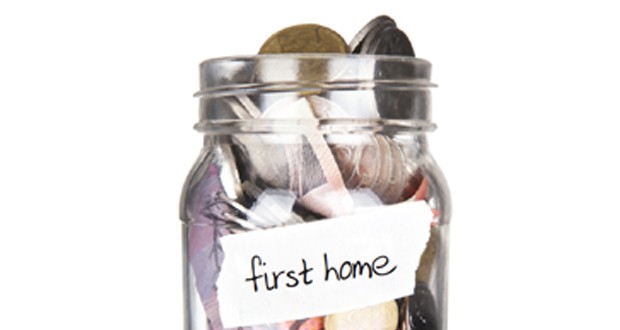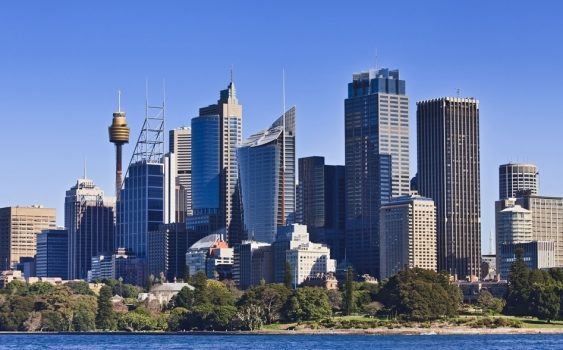There is no doubt about it! The Australian housing markets have turned the corner.
Story: Michael Yardney – Propertyupdate.com.au
Two interest rate cuts, tax cuts, reduced uncertainty around housing, more positive media and easing in the overly tight lending guidelines have combined to generate a significant improvement.
Buyers are back borrowing money and looking for a new home or investment and sellers are tentatively returning to the market.
However our markets are fragmented – whereas the Sydney and Melbourne property markets are showing a clear turn around, as you can see from the chart below from Corelogic the other states are still lagging.
This was the first month on month rise in the national index since values peaked in October 2017 and it was the largest monthly lift since April 2017.
In August 2019, dwelling values increased across all capital cities except for Adelaide, Perth and Darwin with values rising by more than 1% in Sydney and Melbourne.
Combined capital city dwelling values increased by 1.0% over the month and combined regional market values fell -0.1%.


Looking deeper into the stats it is clear that the more expensive end of the Sydney and Melbourne markets are the primary driver of rebounding capital gains.

Sydney Property Market
Since bottoming out after the election in May, Sydney housing values have recovered 1.9% in the last 3 months, but the market remains 13% below the July 2017 peak.
Despite concerns about structural issues in many of the new high rise towers, the Sydney apartment market is showing a stronger performance relative to houses, with unit values up 2.5% since bottoming out compared with a 1.6% rise in house values.
The recovery trend is most concentrated across the premium end of the housing market where values were previously falling more rapidly.
In Sydney, housing values ticked slightly higher for the second consecutive month, providing further confirmation that the market has commenced what is likely to be a gradual recovery after values fell almost 15% from their July 2017 peak.
However the following metrics confirm the Sydney housing market is still performing sluggishly:
- The average selling time of a home is 57 days (41 days a year ago) and
- Vendors are discounting their properties an average of 6.3% to affect a sale (5.9% a year ago)
- 18.7% fewer properties sold in the last 12 months compared to the previous year
Currently there is still a significant number of new apartments coming onto the market in Sydney- it is estimated that 54,000 apartments will be completed in Sydney in 2018 and 2019 – but it’s likely that both buyers and tenants will be wary of these considering the media attention structural issues in new buildings has been receiving.
Investors are abandoning the off the plan apartment sector for many reasons including concerns about construction standards, but many of those who purchased off the plan a few years ago are now having trouble settling with valuations coming in on completion at well below contract price at a time when banks are more reluctant to lend on these properties.
In the background strong economic growth and jobs creation is leading to population growth and ongoing demand for property in Sydney.
At the same time international interest from tourists and migrants continues.
This is a great countercyclical time to look at buying an investment grade property in Sydney which is currently offering investors an opportunity to buy established apartments in the eastern suburbs, lower north shore and inner west in a “buyer’s market” with little further downside and the prospect of the market continuing to move forward
If you’d like to know a bit more about how to find these investment gems give the Metropole Sydney team a call on 1300 METROPOLE or click here and leave your details.


Melbourne Property Market
Melbourne housing values posted their third month-on-month rise, ticking 1.4% higher in August.
After falling by 11.1% between November 2017 and mid 2019, the market has recovered by 1.8%.
The recovery trend is more noticeable at the expensive end of Melbourne’s housing market, with values across the top quartile increasing by 2.7% over the past three months compared with a 1.4% rise across the lower quartile.
The local unit market is still showing a stronger trend relative to houses, with values up 2.4% over the past three months compared with a 1.6% lift in house values.

However the following metrics confirm the Melbourne housing market is still performing sluggishly:
- The average selling time of a home is 49 days (30 days a year ago) and
- Vendors are discounting their properties an average of 6.5% to affect a sale (4.4% a year ago)
- 27% fewer properties sold in the last 12 months compared to the previous year
But the Melbourne property market is very fragmented, with values of detached houses having fallen more than apartments.
The resilience across the apartment sector, despite higher supply levels, probably comes back to a combination of affordability constraints in the market as well as more first home buyers supporting housing demand across the lower price points of the market, thanks to the First Home Owner incentives.
At Metropole we’re finding the Melbourne property market is slowly regaining its confidence and the underlying fundamental growth drivers remain strong.
For example auction clearance rates are rising, albeit on low volumes, but vendors are slowly reentering the market.
Overall property values will be underpinned by a robust economy, jobs growth Australia’s strongest population growth and the influx of 35% of all overseas migrants.
Remember…Melbourne rates as one of the 10 fastest growing large cities in the developed world, with its population likely to increase by around 10% in the next 4 years.
If you’d like to know a bit more about how to find investment grade properties in Melbourne please give the Metropole Melbourne team a call on 1300 METROPOLE or click here and leave your details.


Brisbane Property Market
Brisbane’s property downturn has been quite shallow compared to the big two capital cities, with local values only 2.5% below their peak.
But this followed a relatively mild growth cycle where growth in housing values in Brisbane averaged only 1.4% per annum over the past five years.
But now Brisbane values have posted their second consecutive month of subtle gains.
Corelogic report that dwelling values tracked 0.2% higher in both July and August.
Unit values have led the improving conditions, rising by 1.5% over the 3 months ending August, while house values remain relatively flat -0.2% lower over the same period of time.
The local unit market seems to have emerged from the supply hangover which contributed to a 13.3% overall decline in unit values between the unit market peak in early 2010 and June 2019.

The following metrics show how sluggishly the Brisbane housing market is performing:
- The average selling time of a home is 64 days (38 days a year ago) and
- Vendors are discounting their properties an average of 5% to affect a sale (4.3% a year ago)
- 14% fewer properties sold in the last 12 months compared to the previous year
With migration rates lifting, supply under control and generally healthy levels of housing affordability, the Brisbane housing market fundamentals are looking healthier compared to most other capital cities.
At the same time the underlying strong demand from home buyers and investors from the southern States at a time when yields are attractive and housing affordability is relatively healthy and putting a floor under property prices.
Brisbane’s economy is being underpinned by major projects like Queen’s Wharf, HS Wharf, TradeCoast, Cross River Rail, the second airport runway and the Adani Coal Mine, but jobs growth from these won’t really kick off for a few more years.
Our Metropole Brisbane team has noticed a significant increase in local consumer confidence with many more homebuyers and investors showing interest in property.
At the same time we are getting more enquiries from interstate investors there we have for many, many years.
If you’d like to know a bit more about how to find investment grade properties in Brisbane please give the Metropole Brisbane team a call on 1300 METROPOLE or click here and leave your details.

Adelaide Property Market
Adelaide housing values have trended lower across six of the past eight months, recording a 0.2% fall in August.
 Adelaide is the most affordable capital city but its property values peaked in December 2018 and since then dwelling values have fallen a modest 1.5% .
Adelaide is the most affordable capital city but its property values peaked in December 2018 and since then dwelling values have fallen a modest 1.5% .
The downward trend is evident across both houses and units, although houses have recorded a slightly larger decline relative to units over the past three months, down 1.1% for houses compared with a 0.9% fall in unit values.
On an annual basis, Adelaide unit values have recorded a mild capital gain, rising half a percent while house values are 1.4% lower.
Signs of the slower Adelaide property market include:
- The average selling time for a home is 50 days – up from 44 days a year ago)
- Vendors are discounting their properties an average of 5.7% to affect a sale (5% a year ago)
- 6.3% fewer properties sold in the last 12 months compared to the previous year
While things look good for Adelaide property in the short term, with sales activity starting to trend higher, based on improving buyer demand, over the next few decades the bulk of Australia’s long-term jobs growth, economic growth and population growth will occur in our 4 big capital cities meaning there are better locations for long term wealth creation that Adelaide.


Perth Property Market
Perth has recorded a further reduction in dwelling values, down 0.5% over the last month and 8.8% lower over the past twelve months taking values 20.6% lower since peaking in June 2014.
The ongoing weakness in the Western Australian housing market can be attributed to mix of weak economic and demographic conditions overlaid with a tight credit environment.

Perth values are now amongst the most affordable amongst the capital cities, but it’s much too early for a countercyclical investment in the west – I can’t see prices rising significantly for a number of years.
Signs of the ongoing slump in the Perth housing market include:
- The average selling time of a home is 66 days (59 days a year ago) and
- Vendors are discounting their properties an average of 6.9% to affect a sale (6.5% a year ago)
- 8.3% fewer properties sold in the last 12 months compared to the previous year

Hobart Property Market
Hobart has been the best performing property market in the last three years, but its boom is now over.
CoreLogic figures show prices are stabilising and now 0.3% below their peak in March this year.
It’s likely the Hobart market will continue to lose its momentum over the year.
Signs of the slowing Hobart property market include:
- The average selling time for a home is 32 days (12 days a year ago)
- Vendors are discounting their properties an average of 3.8% to affect a sale (3.5% a year ago)
- 11.6% fewer properties sold in the last 12 months compared to the previous year
Over the last few years too many investors chased the Hobart “hot spot” at a time when there was a lack of employment drivers, insufficient population growth and not enough infrastructure spending.
Remember home buyers create a property market (they make up 70% of buyers) and investors create property booms – which is what’s happened in Hobart.
And Hobart is too small a market to be a long term “investment grade” proposition.

Darwin Property Market
The Darwin property market peaked in August 2010 is still suffering from the effects of the end of our mining boom with a very soft employment market and lack of migration and infrastructure spending.

Currently values are 30.7% below their historic peak and it is unlikely we’ll see these types of house prices again in the next decade.
However there are signs that Darwin’s slump is easing a little:
- The average selling time for a home is 68 days (77 days a year ago) and
- Vendors are discounting their properties an average of 8.2% to affect a sale (7.7% a year ago)
- and a slight increase in number of sales in Darwin (0.4%) than 12 months ago
The small size of the Darwin market makes it more susceptible to local events and Darwin typically has a higher and more variable vacancy rate, a product of a large transient working population.
Darwin does not have significant growth drivers on the horizon and would be best avoided by investors.

Canberra Property Market
Canberra’s property market has been a “quiet achiever” with dwelling values having grown 1.2% over the last year, but they seem to have peaked in April this year.
Signs of the slowing momentum of the Canberra housing market include:
- The average selling time for a home is now 53 days (41 days a year ago) and
- Vendors are discounting their properties an average of 3.1% to affect a sale (2.5% a year ago)
- 10.3% fewer properties sold in the last 12 months compared to the previous year.

Overall…the Australian housing markets are slowly improving
Vendor metrics have generally improved over recent months but are weaker than a year ago with the number of days to sell a property and vendor discounting rates much higher than a year ago while auction clearance rates are now higher than they were a year ago although volumes also much lower.


While sellers went on strike for a year or two realising that it wasn’t a great time to sell, vendors now seem to be slowly reentering the market and while new listings (properties for sale) are lower than recent years they are lifting more rapidly than over recent years pointing to renewed vendor confidence.

One sign of increased confidence, especially in the Melbourne and Sydney property markets arising auction clearance rates.
If these continue to remain in the 70% range this could lead to rising property values.

Our rental markets
While property values have continued to improve rental markets are still sluggish.
National rents were -0.1% lower over the month, -0.2% lower over the past three months and 0.7% higher over the past year.
Rental yields have now begun to ease over the past two months as rental markets remain soft and values have now started to lift.


Other market indicators:
The trend in population growth has eased over the twelve months ending March 2018, as both the rate of net overseas migration and the rate of natural increase fell.
Slower population growth has a negative implication for housing demand.

Dwelling approvals are trending lower and expected to fall further as presales become tougher and supply overhangs remain.

Housing finance data and credit aggregates highlight the slowdown in investment lending, while owner occupier lending has slowed but has risen by 4.9% over the 12 months to July 2019 while investor credit has increased at an historically slow rate of 0.3%.
Official interest rates were unchanged in August 2019 while mortgage rates are now at levels last seen in the late 1950s.


First home buyers are back in the market, borrowing more and getting a foothold in the market at a time of less competition form investors.

While a lot of fuss was made about the July housing credit figures, the rise in lending is coming off a very low base and investors are still having more difficulty getting loans due to the banks more stringent serviceability criteria.


What’s ahead?
We’re at an interesting stage of our property cycle with signs with clear evidence that the Melbourne and Sydney markets have bottomed.
Remember…it’s normal to have mixed signals at the turning points of cycles – not all the news will be good and not all segments of the market will rise at the same time.
While there may be a little more downside in our big two capital city markets it looks like the best time to buy counter cyclically in Sydney and Melbourne for over a decade and to ride the Brisbane property cycle.
Canberra property should continue to perform well and Adelaide should hold its own, but it’s likely Hobart will now slowly move to the slump phase of its own property cycle and there is still more downside for Perth and Darwin
Of course, property will remain a sound asset for long term wealth creation, but now more than ever correct asset selection will be critical, so only buy in areas where there are multiple long-term growth drivers such as employment growth, population growth or major infrastructure changes.
Similarly, suburbs undergoing gentrification are likely to outperform







